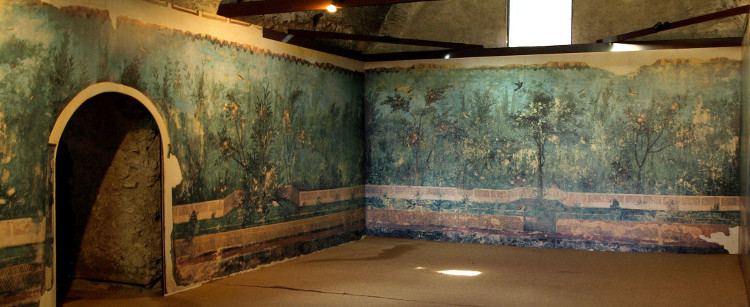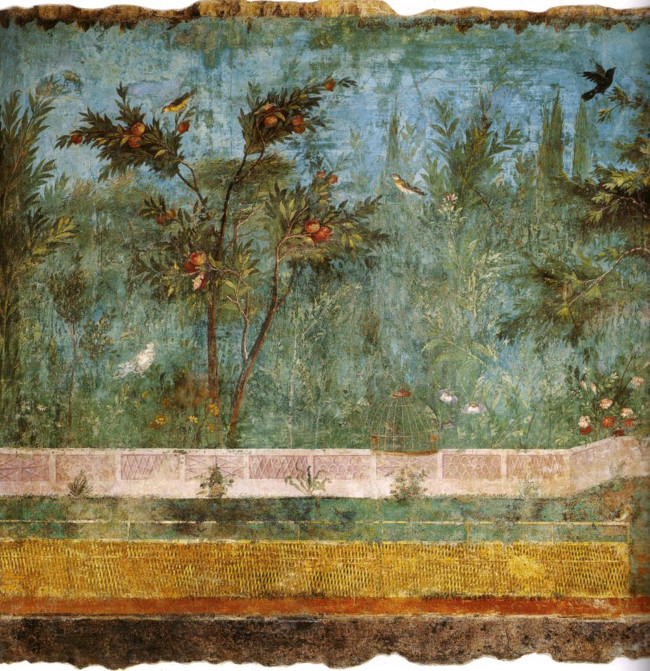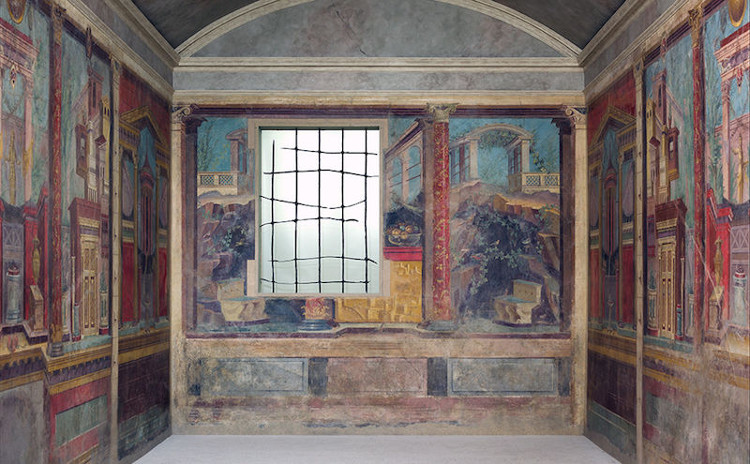Virtual reality comes from ancient times in Rome
The best virtual reality experience is probably in a BC-built cellar at Prima Porta on the outskirts of Rome.
It was the Livia Drusilla mansion , (58TCN - 29 BCE), the first Roman emperor's wife. In the house there is a sounding room that is painted very sophisticatedly, just like a miniature garden with all kinds of plants, oak, palm, pomegranate and some typical trees of Rome stand out on lively nature. . Especially these drawings seem to move at different angles.

The room is sophisticated, with drawings that seem to change at different angles.
For an estimated construction from 25 BC, this is an extremely sophisticated work with dot drawing techniques. The room has no windows to avoid breaking the landscape.

Fig tree fig.
"Virtual reality" or VR has been around since the 1980s with rudimentary devices developed on previous projection and 3D research. Therefore, the definition of VR can be said to be quite limited. Many people question why only computer-related materials or structures are placed in VR? To be more precise if VR only talks about an artificial panoramic environment, VR has been around for a long time before technology giants developed.

Bedroom of Fannius Synistor.
In particular, the bedroom of Fannius Synistor , an ancient " great family" (50 BC). The big explosion in 79 buried this work until it was excavated in 1901. Inside the room covered by a drawing depicting the old city according to 3D drawing with enough columns, the class follows the law far and near.
When entering the renovated room at the Metropolitan New York Museum of Art, everyone must feel like standing in the middle of a small town. Marble, cracks in the fuzzy paint, the hallway is as real. Using the word "magic" to describe the skill of Roman artists is not enough.

Chiesa del Gesu church ceiling.
Later, similar painting techniques were used in religion. For example, the ceiling of the Chiesa del Gesu church . The painting "Victory of the Most High Jesus" depicts angels landing from heaven to the church, around the sinners. The architect and sculptor Giovanni Battista Gaulli, or Baciccio, created this work so amazingly accurate.
Naturally, VR's history not only has ancient Rome frescoes, but it could be more. The definition of VR has been limited in recent years, only to devices like Oculus or Vive glass under high-tech names and thinking that virtual images are only accurate when a computer is available. Modern VR must be based on imagination instead of being attached to technology which is also a product of human intellect.
- Virtual reality technology harms health
- 8 other applications of virtual reality may appear in the near future
- You will understand the real fear when wearing virtual reality glasses playing horror games when watching this clip
- Launched the world's first 'virtual' newspaper
- Learn how to swim and dive without a shirt thanks to technology
- Virtual reality software exposes brain activity
- How are AR and VR different?
- Google Earth virtual reality lets you tour anywhere in the world
- Virtual reality device helps women reduce labor pains
- Virtual reality meditation helps women reduce pain at birth
- Samsung is developing virtual reality glasses
- Google is developing a virtual reality system without connecting to other devices
 Discovered an ancient centipede fossil 99 million years old
Discovered an ancient centipede fossil 99 million years old Discovered bat-like dinosaurs in China
Discovered bat-like dinosaurs in China Discovered a 200-year-old bronze cannon of the coast
Discovered a 200-year-old bronze cannon of the coast Discover 305 million-year-old spider fossils
Discover 305 million-year-old spider fossils